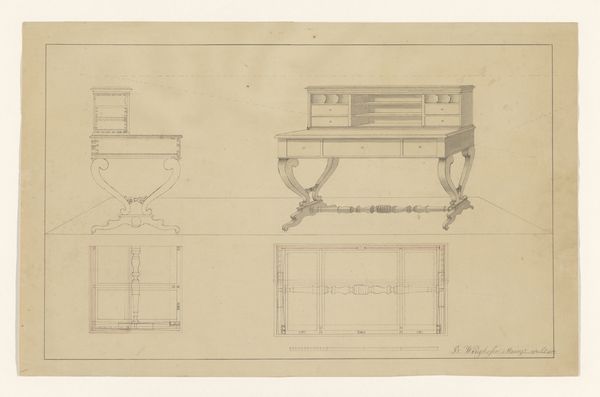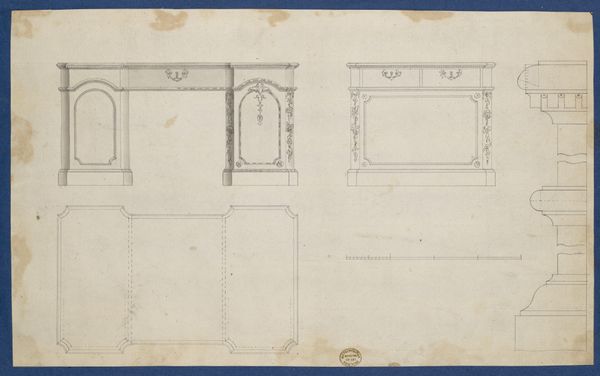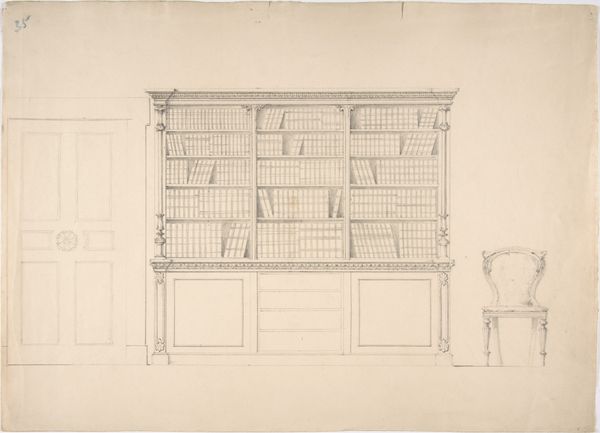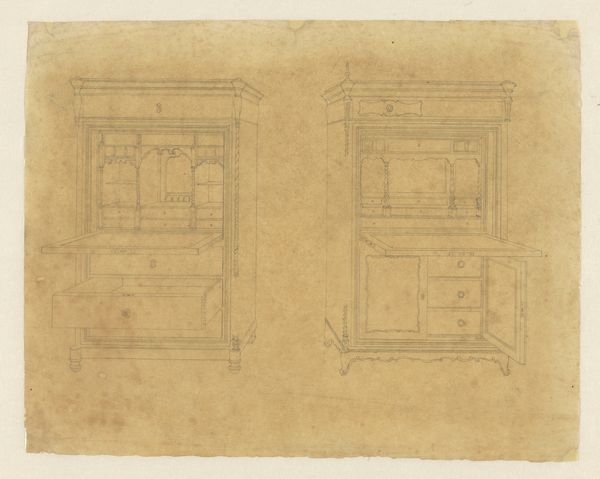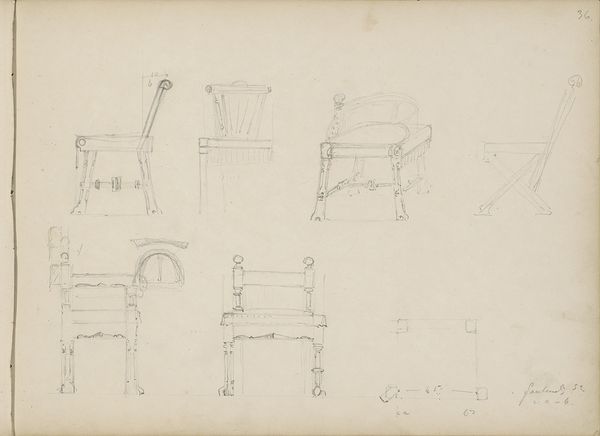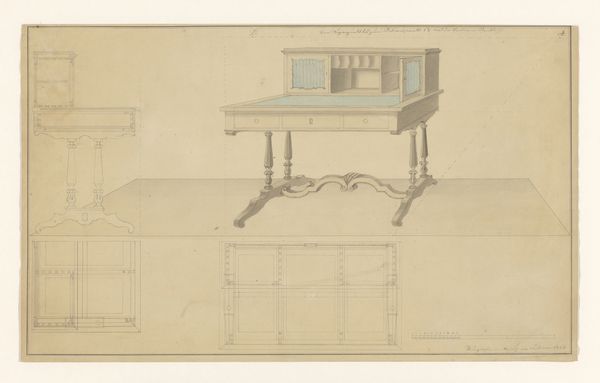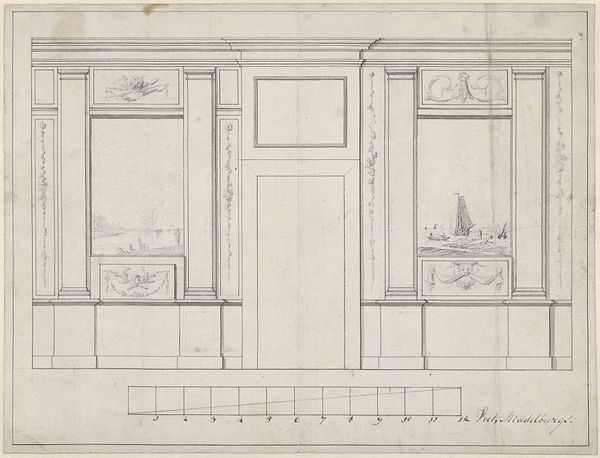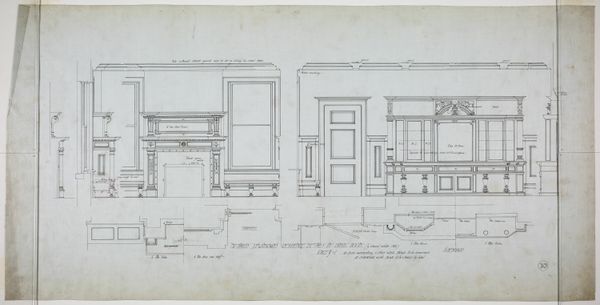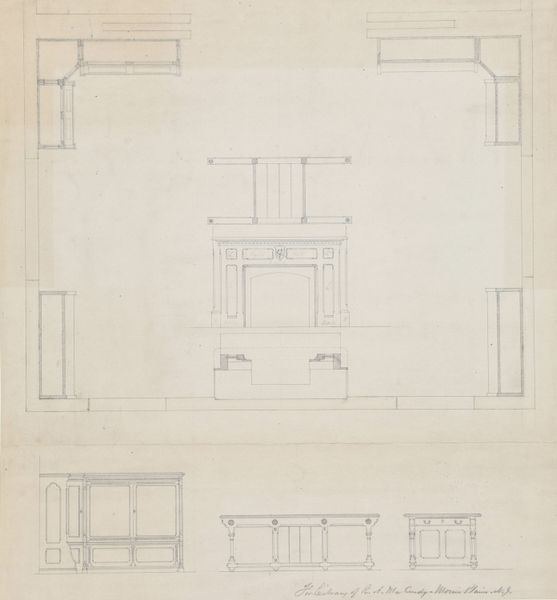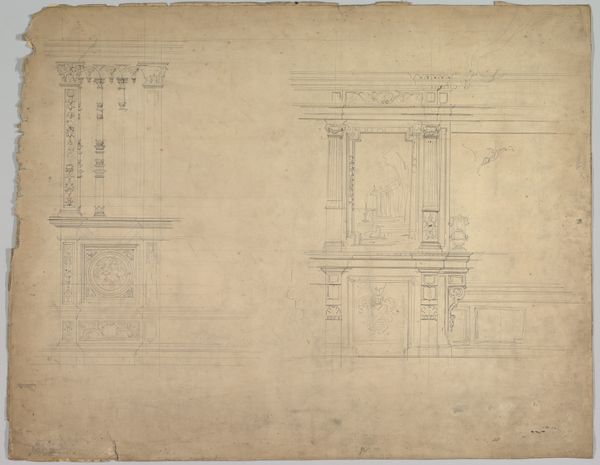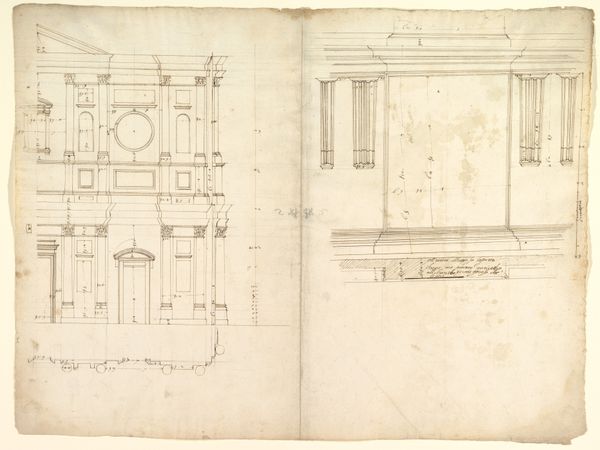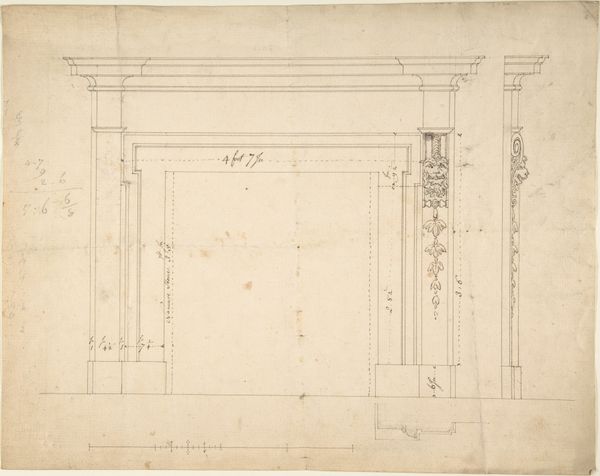
Ontwerp voor een schrijfmeubel met boekenkast en voor een zilverkast c. 1852 - 1855
0:00
0:00
drawing, paper, pencil
#
drawing
#
landscape
#
paper
#
pencil
#
academic-art
Dimensions: height 268 mm, width 422 mm
Copyright: Rijks Museum: Open Domain
Curator: This fascinating sketch, attributed to B. Winghofer, dates from around 1852 to 1855 and presents two design proposals: one for a writing desk with a bookcase and the other for a cabinet, probably intended for displaying silverware. Editor: My first thought is that there's something delicate and tentative about the lines, despite the obviously elaborate intentions behind these furniture designs. The pencil work feels light, almost like a whisper of opulence. Curator: Absolutely, it’s crucial to consider the historical context here. Winghofer likely operated within the artistic norms and expectations of the mid-19th century. Designs such as this showcase the academic approach favored then, aiming to reflect a refined aesthetic and the era’s aspirations toward higher learning and cultured domestic life. Editor: And what was the probable production process of creating such elaborate furniture at this time? How were pieces like this commissioned, fabricated, and then ultimately integrated into people’s everyday lives, considering the craftsmanship and labor it demanded? Curator: The client-patron relationship would've been integral; such ornate furniture signifies status and access, involving consultations, bespoke designs and a specific kind of patronage to dictate and approve what styles and symbols would best convey one’s desired standing within their social milieu. These designs served, in effect, as a visualization of aspirations to rise above prevailing standards, literally embedding values within the grain. Editor: The intricate detail – I imagine each curve of the embellishments and flourishes needed a highly skilled artisan. It's amazing to think about the process of converting a relatively ephemeral sketch into a sturdy material reality, transforming the potential implicit on paper into tangible social performance within wealthy households. Curator: Precisely. And further, consider the visual language employed. These objects embody societal values surrounding literacy and status. A prominent writing desk coupled with shelves suggesting overflowing knowledge—both symbolize enlightenment within the household’s curated spaces. It acted almost as advertisement of intellectual achievement. Editor: So we shift our focus now, we're looking at furniture no longer just as utilitarian objects, but as material artifacts deeply implicated in complex networks of social aspirations, and markers of cultural capital. It's about who had the privilege, and means to show, through labor-intensive crafted objects, participation in a certain cultivated lifestyle. Curator: I would conclude that it’s really revealing when examining designs from this perspective: a window into visualizing societal ideals, tastes, and ambitions encapsulated within our material heritage. Editor: A pencil line holding the weight of culture. It is pretty interesting how art making and craft production intertwine to shape, reflect and perpetuate ideas.
Comments
No comments
Be the first to comment and join the conversation on the ultimate creative platform.
